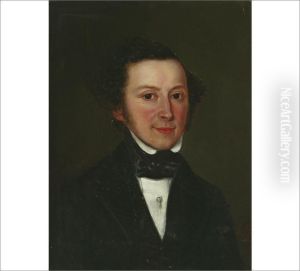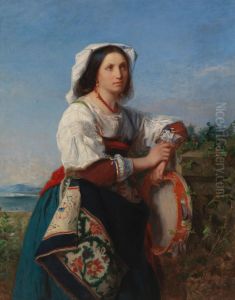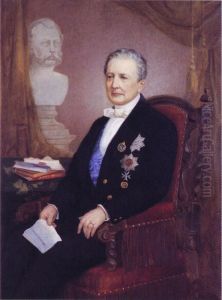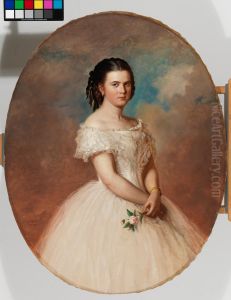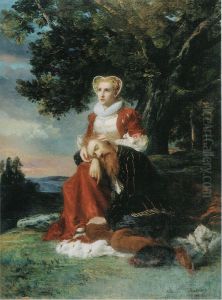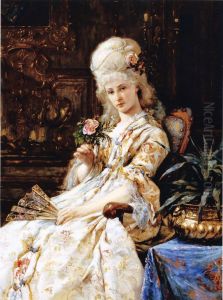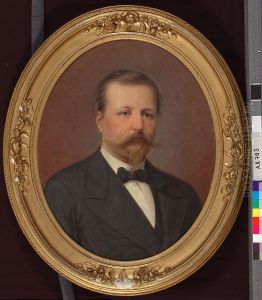Erik Johan Lofgren Paintings
Erik Johan Löfgren was a Finnish painter, renowned for his portraits and genre scenes. Born on July 5, 1825, in Loviisa, a small town in Finland, Löfgren showed an early interest in the arts. He began his education in Helsinki and continued his studies abroad, which was common for Finnish artists of the time who sought to gain a broader perspective and expertise.
Löfgren moved to Düsseldorf, Germany, which was an important center for art and artists in the 19th century. There he joined the Düsseldorf school of painting, which was known for its detailed, poetic approach to landscape and genre painting. Löfgren's style, however, leaned more towards portraiture, and he became particularly noted for his ability to capture the psychological depth and character of his subjects.
In the 1850s, Löfgren traveled to Paris, which was then the epicenter of the art world. The time he spent in the French capital had a significant influence on his artistic development. He absorbed the nuances of the emerging Realist movement, which would later inform his work. While in Paris, Löfgren also spent time copying the works of old masters, a practice that further honed his technical skills.
The artist eventually returned to Finland and became an influential figure in the Finnish art scene. He taught at the Drawing School of the Finnish Art Society, which later became the Finnish Academy of Fine Arts, imparting his knowledge and skills to a new generation of Finnish artists.
Throughout his career, Löfgren received various commissions for portraits, which included notable figures of Finnish society and culture. His work is characterized by a fine attention to detail, subtle use of color, and a focus on the inner life of his subjects, which often gives his portraits a contemplative and introspective quality.
Erik Johan Löfgren's contribution to Finnish art is significant, as he was among the artists who laid the foundation for the nation's artistic tradition in the 19th century. His legacy includes not only his own artwork but also his influence on students who would go on to shape Finnish art in the following years.
Löfgren passed away on March 4, 1901, in Helsinki, leaving behind a body of work that continues to be appreciated for its craftsmanship and emotional depth. Today, his paintings can be found in various art museums and collections in Finland and across Europe.
